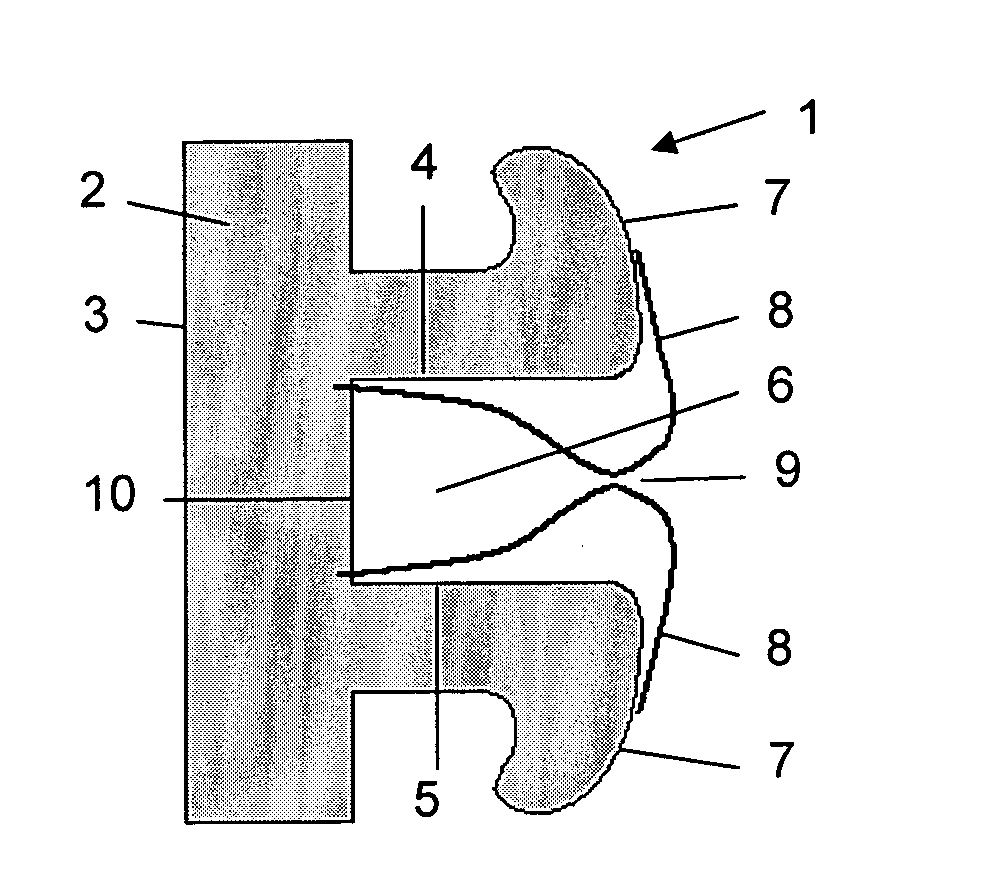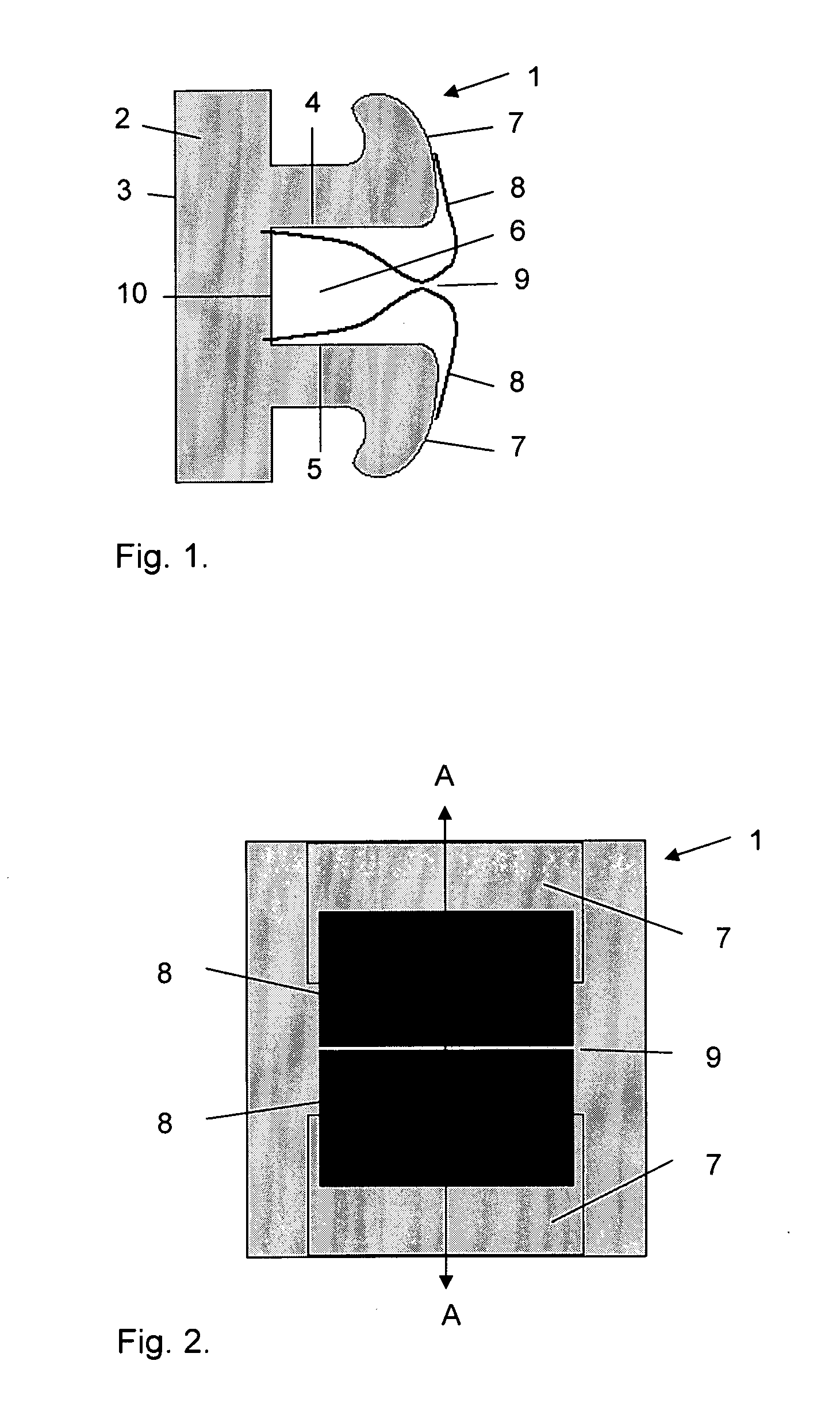Orthodontic bracket
a technology for orthodontic brackets and brackets, applied in the field of orthodontic brackets, can solve the problems of only being able to apply wires with a sufficient diameter, affecting the effect of intended correction, etc., and achieve the effect of optimal fixation and increased resistan
- Summary
- Abstract
- Description
- Claims
- Application Information
AI Technical Summary
Benefits of technology
Problems solved by technology
Method used
Image
Examples
Embodiment Construction
[0026]The bracket consists—as FIG. 1 shows—of a cubed-shaped body (1) the basis (2) of which is fixed, usually using adhesive via the lower surface (3) to a tooth which is not shown on the drawing. On the basis (2) are two fixed positioned parallel running side walls (4, 5) that form a slot (6).
[0027]The brackets positioned on the row of teeth have a row of slots (6) forming a continual groove (not illustrated). The side walls (4, 5) of the slots (6) are constructed to form out pointing right-angles at their opposing free ends and offer there rounded application surfaces (7) for two identical leave-shaped springs (8). From these application surfaces (7) the two springs (8) are curved forward to the middle of the archwire slot (6) and to a wedge-shaped gap (9). From the gap (9) the distance between the springs (8) and the neighbouring side walls (4, 5) is continually reduced but without these making contact. The springs (8) are secured on the floor (10) of the slot (6).
[0028]FIG. 2 s...
PUM
 Login to View More
Login to View More Abstract
Description
Claims
Application Information
 Login to View More
Login to View More - R&D
- Intellectual Property
- Life Sciences
- Materials
- Tech Scout
- Unparalleled Data Quality
- Higher Quality Content
- 60% Fewer Hallucinations
Browse by: Latest US Patents, China's latest patents, Technical Efficacy Thesaurus, Application Domain, Technology Topic, Popular Technical Reports.
© 2025 PatSnap. All rights reserved.Legal|Privacy policy|Modern Slavery Act Transparency Statement|Sitemap|About US| Contact US: help@patsnap.com



